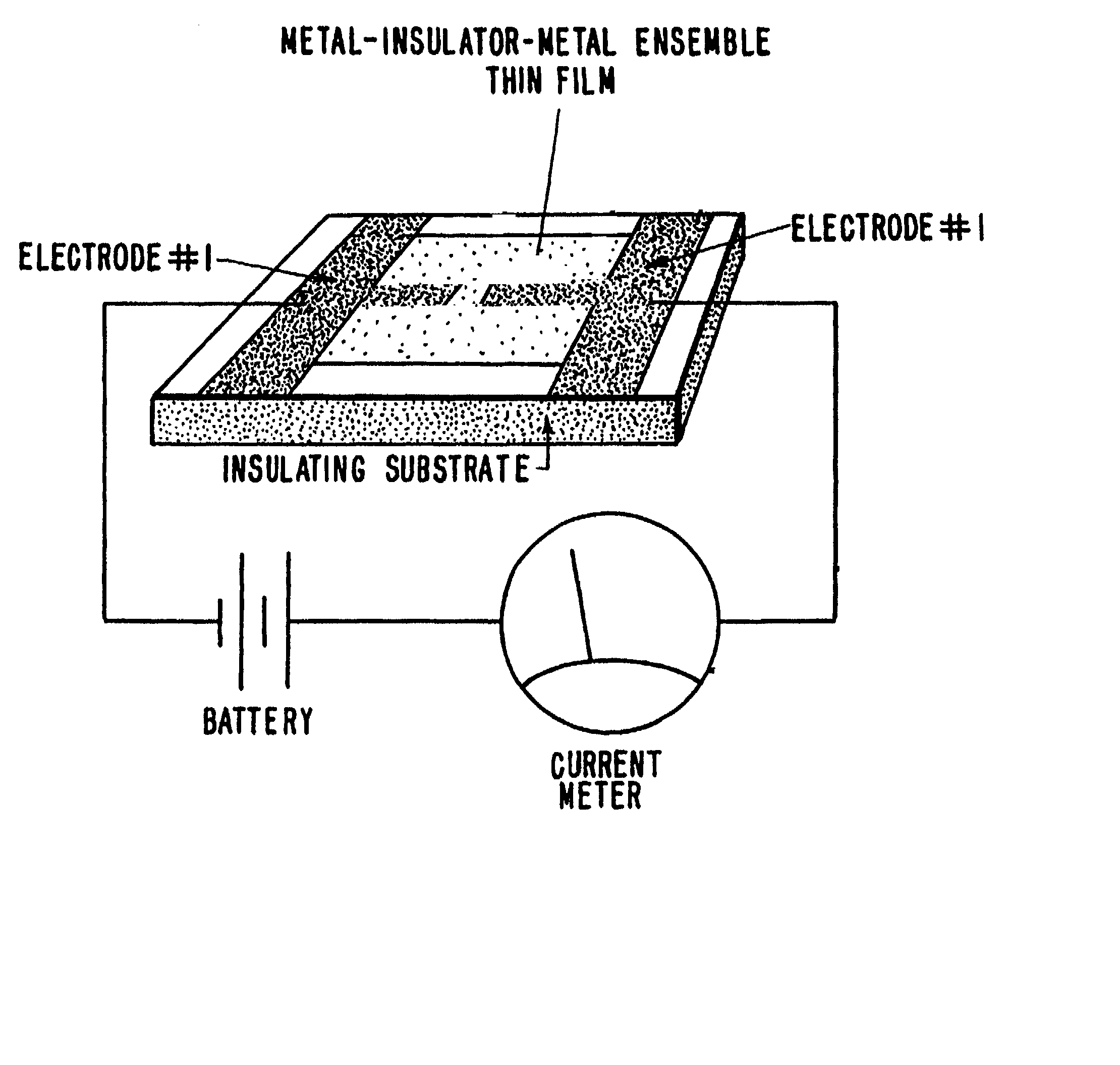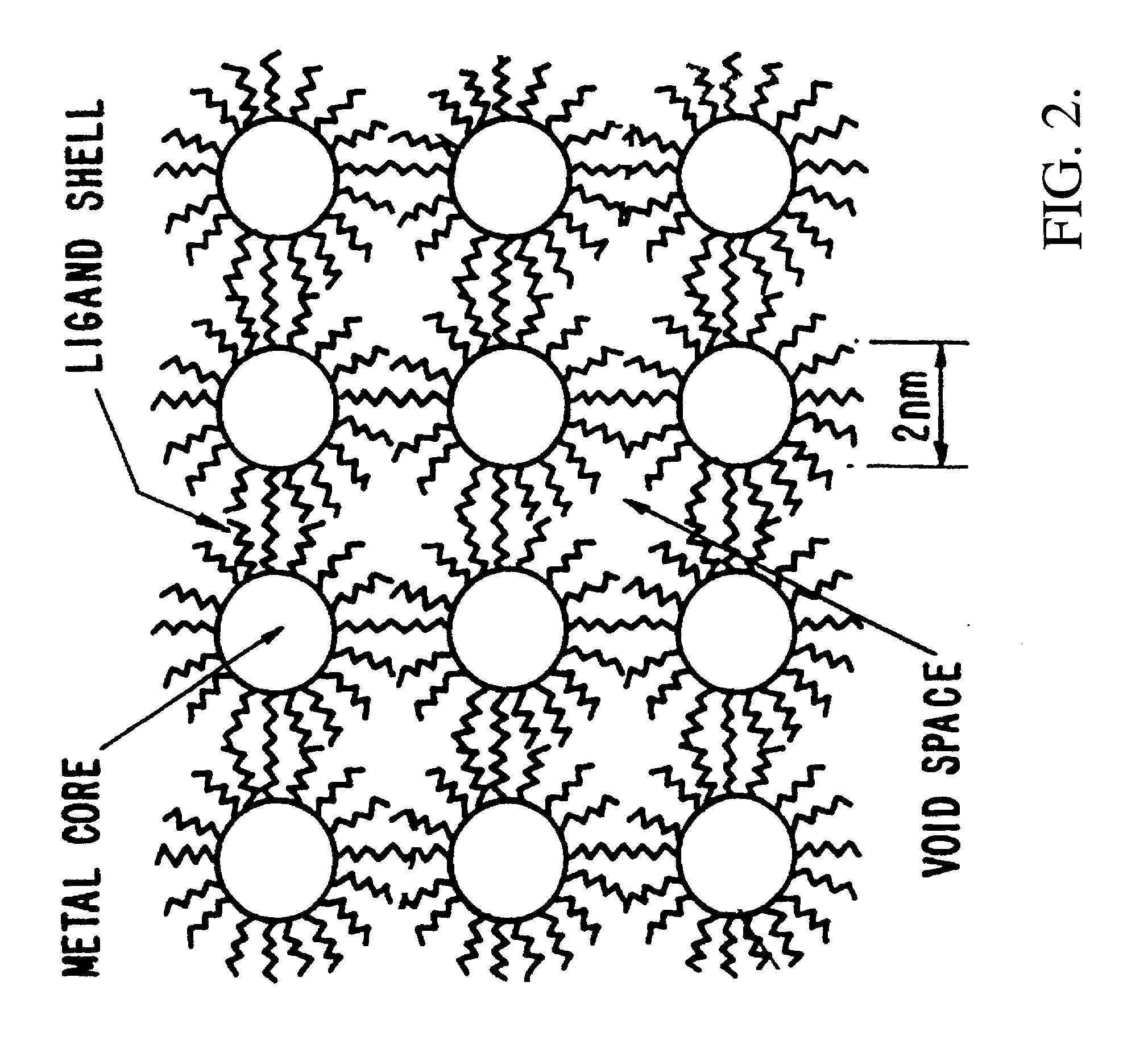Nonlinear gold nanocluster chemical vapor sensor
a chemical vapor sensor and nanocluster technology, applied in nanoinformatics, instruments, material impedance, etc., can solve the problems of sacrificing reliability, miniaturization affinity, and low cos
- Summary
- Abstract
- Description
- Claims
- Application Information
AI Technical Summary
Benefits of technology
Problems solved by technology
Method used
Image
Examples
example
[0048] To demonstrate a Coulomb blockade-based nanocluster vapor sensor of the type depicted in FIG. 3, we carried out the fabrication as described above. In order to accentuate the charging effects responsible for Coulomb blockade-mediated detection, following self-assembly of the clusters onto the electronic substrate, an exchange reaction was conducted in which .omega.-functionalized carboxylic acid-alkanethiols were substituted in place of a fraction of the bound unfunctionalized alkanethiols. The carboxylic acid groups so attached are then available to participate in acid-base interaction with the analyte vapor that would result in charge transfers that would in turn modify the Coulomb blockade conditions in the film thereby affecting conductivity. To illustrate the operation we exposed the sensor to piperidine vapor. At a concentration of 22 parts per thousand the resulting temporal response of the sensor is shown in FIG. 5. The observed increase in current by a factor of 25 i...
PUM
 Login to View More
Login to View More Abstract
Description
Claims
Application Information
 Login to View More
Login to View More - R&D
- Intellectual Property
- Life Sciences
- Materials
- Tech Scout
- Unparalleled Data Quality
- Higher Quality Content
- 60% Fewer Hallucinations
Browse by: Latest US Patents, China's latest patents, Technical Efficacy Thesaurus, Application Domain, Technology Topic, Popular Technical Reports.
© 2025 PatSnap. All rights reserved.Legal|Privacy policy|Modern Slavery Act Transparency Statement|Sitemap|About US| Contact US: help@patsnap.com



